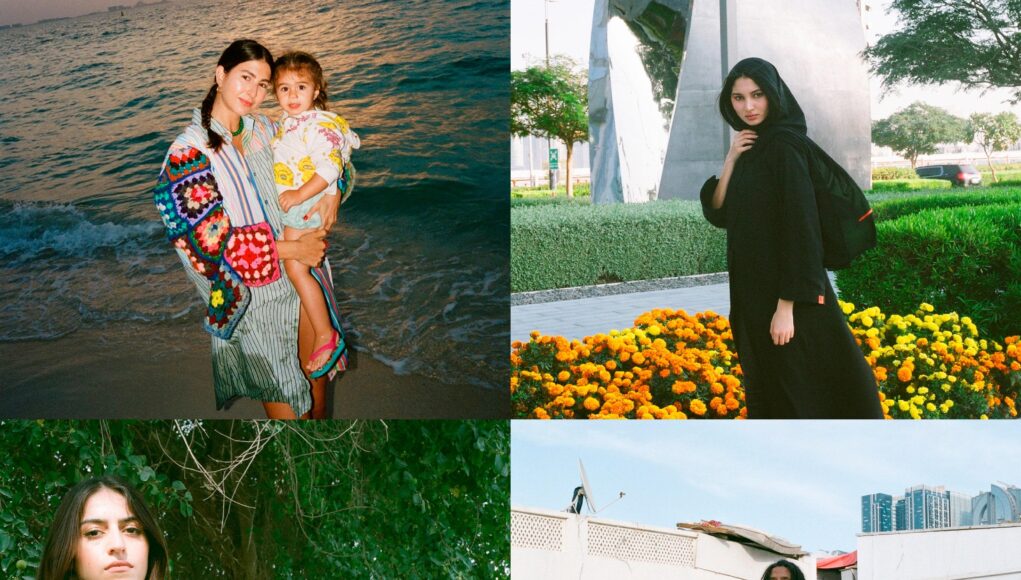For all of the “slowing down” we did last year, our impact on the planet hasn’t really changed. NASA confirmed 2020 was the hottest year on record, tied with 2016. The global temperature averaged 1.84 degrees Fahrenheit (1.02 degrees Celsius) higher, contributing to ongoing issues like warming oceans, melting sea ice, and, perhaps most obviously, longer and hotter summers. Every degree increase in the global average temperature results in roughly 1 billion people living in borderline uninhabitable conditions, many without the means to afford cooling technology. By 2070, that could be roughly a third of the global population.
In parts of Africa and the Middle East, some days feel like a preview of what’s to come. In Dubai, summer temperatures hover around 100 degrees Fahrenheit (37 degrees Celsius), though with humidity it can feel more like 120 degrees Fahrenheit (48 degrees Celsius). The city has been designed almost entirely around cars as a result, with retail developments focused on air-conditioned public spaces, like sprawling malls, museums, and apartment buildings with markets, restaurants, and other amenities built-in (so residents almost never need to step outside).
None of this has bearing on why people love living in Dubai: When it isn’t exceedingly hot, it’s paradise, drawing tourists year-round for its breathtaking architecture, sumptuous resorts, and diverse art and culture scene. Dubai is also home to a growing class of young designers, many of whom grew up in the city or throughout the Middle East. They’re building a fashion community from the ground up, one that’s happily untethered from the trends and “rules” of New York and Paris. Merging Dubai’s innovative present with its rich past and cultural heritage, their collections reflect the city’s vibrancy with an undeniable global appeal.
Reemami’s Reema Al Banna, All Things Mochi’s Aya Tabari, Precious Trust’s Wathek Allal, and The Cap Project (whose designers prefer to remain anonymous) also have no intention of leaving Dubai, so reconciling the city’s futuristic landscape with its uncertain fate is top of mind. Its glittering developments and growing economic power exist at odds with the city’s unique vulnerability to climate change: Within decades, Dubai could face both scorching heat and catastrophic floods if we don’t dramatically reduce our global carbon emissions.
Vogue spoke to these designers about how they’re creating with the future of Dubai—and the planet—in mind. Some are using deadstock and organic fibers; others are experimenting with upcycling; and one is bringing an artful update to traditional, flowing abayas. Meet them below.
Before the pandemic, Ayah Tabari was feeling uneasy about her label’s size and scale. Launched in 2013, All Things Mochi began as a small line of dresses and blouses embroidered by artisans all over the world, from India to Mexico to Tabari’s home base in the United Arab Emirates. But as the brand scaled and expanded to global retailers like Neiman Marcus, Bloomingdales, and Moda Operandi, the rapid pace, excess inventory, and lack of transparency felt untenable.
“I wasn’t happy anymore, and it wasn’t sustainable,” she says. “I was traveling all the time to work with the artisans, but the wholesale orders were so big, it just didn’t work anymore. These women were embroidering at home with their children‚ they couldn’t do 120 units. So I had to reduce the amount of artisanal work, and more and more of the clothes started to be produced [in factories]. And after a while, I was like, where is the artisanal part of this? Where is the design?” She continues. “I just had to put my foot down and follow my heart, and do this on a healthier, smaller scale.”
Her new vision for All Things Mochi, complete with a rebranding, debuted earlier this month. Tabari and her team are now focused almost entirely on upcycling: They reimagined leftover garments from past collections and, in some cases, took them apart and spliced them with vintage items. A billowing white dress mixed a 1970s caftan with leftover embroidery Tabari’s team commissioned from Jaipur, India, for instance. Another shirtdress combined shirting stripes from three vintage button-downs with hand-crocheted sleeves, also made in India. “At first it was a struggle to [pivot] from making clothes from scratch to reworking existing and vintage pieces,” Tabari says. “But my team was ready. They wanted a slower pace, and they believe in the future and in sustainability. This new vision is to produce using everything possible [at our disposal] and make things that feel relevant today.”
Reema al Banna might draw 100 prints for every five that make it into her bold, pattern-clashing collections. What began 10 years ago as a side project to her career as a graphic designer has since grown into Reemami, a global brand with a conscience for people and the planet. Al Banna has collaborated with special needs artists, recreating their paintings as prints and giving them a percentage of the proceeds, and she’s tapped a group of Palestinian women in a refugee camp to embroider her next collection. Born to Palestinian parents who moved to Dubai in the 1970s, she says it’s the first time she’s digging into her own roots in her design process.
Al Banna also uses mostly organic, upcycled, and deadstock materials, a now-trendy practice that was hardly considered “luxurious” just a few years ago. She recently upcycled her scraps into foulards and face masks, each made by the same artisans who sew her ready-to-wear. When Al Banna launched Reemami roughly a decade ago, Dubai had little in the way of a garment industry, but she was committed to local production (both to support her community and avoid the carbon footprint of international shipping). She found sewers who made simple uniforms and traditional pieces, but worked closely with them to make more complicated garments. They now produce her silk blouses, cut-out jackets, and patchwork slips on-demand whenever possible, so Al Banna can avoid the waste of overstock.
“People are very interested in living more sustainably, but sadly I don’t think everyone makes the connection between climate change and its [impact] on Dubai,” she says. “Sometimes it gets to 60 degrees [Celsius, or 140 degrees Fahrenheit] in the summer, and it’s just crazy. We live in front of the air conditioner, and you can’t even step outside. It’s something that just isn’t discussed [in relation to climate change]. People usually leave in the summer, but with lockdown, people were here and had to experience it.” Al Banna rarely designs true outerwear, and instead focuses on items that can be layered or removed as the weather changes; some garments have convertible sleeves. “It’s just programmed in me to design this way,” she says. “I have clients in London, China, and the United States, too, but a good white shirt or printed dress [is desirable] regardless of the weather.”
Run by two designers who prefer to be anonymous, The Cap Project earned its name from the duo’s sustainable missive: “We buy enough material to make a certain number of pieces, and once we’ve run out, we cap it,” one explains. Their signature wavy-edged Cloud abaya (a robe-like garment preferred by some Muslim women) might be offered in a new color or material every few months, but as little as five or six will be available before its production is capped. “Being in the fashion industry can burden you, knowing how much is wasted,” she adds. “We have a clear conscience that we don’t have piles of fabric and inventory laying around.”
This spring, they’re introducing a new sheer “overlay” in breezy, crinkled silk organza, which can be layered over a slip dress, an abaya, or even trousers. “We don’t even know how to categorize this product, because it’s so versatile. It’s such a special piece you can wear so many ways.” When Ramadan celebrations, weddings, and black-tie events start again, the overlays could spice up an old dress or negate the need for a brand-new suite of evening gowns.
“Dubai is very resilient, and I do see a lot of change around me in terms of sustainability, and with brands changing up their packaging or banning plastic,” she says. “If we can continue working this way for years down the line, I think we’ll have done our part.”
Like many designers before him, Precious Trust’s Wathek Allal began making clothes when he couldn’t find what he wanted to wear. He started with a few pieces, and it slowly grew into a fully-fledged business as more and more people asked him to make similar T-shirts and jackets for them. “Precious is my nickname for the people I care about, and trust is the meaning of my name in English,” he explains. “Everything I design is inspired by my relationships with these people, or things we’ve experienced together, so I’ll write different things on the pieces. It’s a little selfish. Ten years from now, I just want to remember why I made a piece. It’s like an ongoing journal.”
Allal’s latest collection ranges from an embroidered varsity jacket (featuring a pearl in a clamshell, plus a mix of English and Arabic script) to paint-splattered tanks and streaky, “muddy-looking” skirts, as well as a few functional items like a technical balaclava. Each is made in small, limited production runs with an eye toward sustainability. “I actually like heavier pieces, so I’ll still wear all of that in the summer,” Allal says. “Everything in Dubai is air conditioned, and no one goes outside. But for me, it’s the only way I can skate, so there’s really no escaping the heat. I’ve just had to get used to it and wear tank tops and shorts.”
Since the pandemic, Allal has spent the year learning to screen-print and sew at home, with plans to release a denim line in the coming months. When travel resumes, he’ll open pop-ups in London, New York, and throughout Europe. “I love Dubai, but I want to see the world.”









